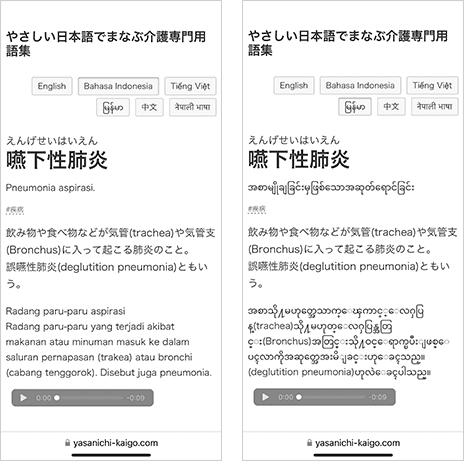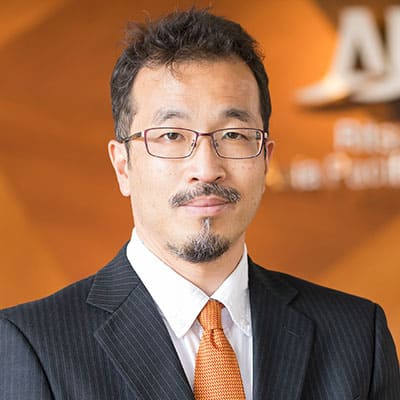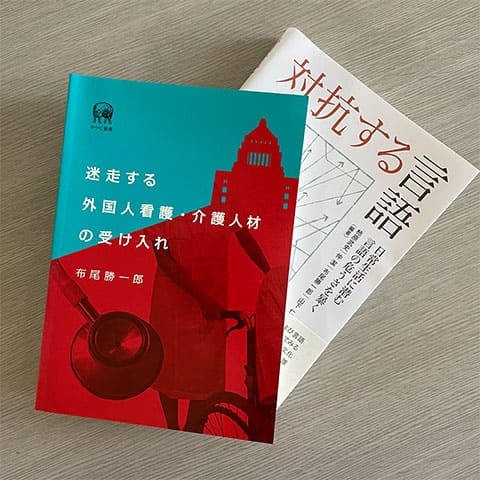Connecting Non-Japanese Workers and the Japanese Language to Attain an Inclusive Society
Categories:
Overview
Providing recommendations and assistance with the intention of building better relationships between non-Japanese workers and the Japanese language and between non-Japanese workers and Japanese society
The number of foreigners residing in Japan has exceeded 3.5 million. In particular, there has been progress in the acceptance of non-Japanese human resources with varying status of residence, such as Economic Partnership Agreement (EPA), Technical Intern Training and Specified Skilled Worker, in the nursing care field. However, the Japanese language poses a considerable barrier to the long-term employment and social participation of those human resources as well as to their self-realization.
I, the principal investigator, am studying how Japanese language education policy for non-Japanese workers has been discussed and implemented while placing particular focus on human resources in the nursing care fields. Through analysis of minutes of National Diet sessions and policy documents, I have clarified the challenges present with Japanese language education policy and made policy recommendations. I have also offered recommendations regarding the language rights of non-Japanese workers and the ideal nature of Japanese language educator training and local Japanese language education in relation to those rights.
Simultaneously, I have also tackled the development of educational materials necessitated by Japanese language learners in the nursing care and nursing fields. For the long-term employment of workers in those fields in Japan, the National Examination for Certified Care workers carries considerable meaning. As this National Examination is administered in Japanese and includes a number of specialized terms regarding nursing care, passing it presents a significantly high hurdle to non-Japanese individuals. In collaboration with researchers at other universities and Web designers, I have developed educational materials for such non-Japanese care workers to master those specialized terms when they take the exam, one of which is the “Learning Nursing Care Vocabulary in Easy Japanese” website. These materials make learning Japanese possible regardless of the learner’s native tongue or cultural background, and provide explanations of technical terms using “Easy Japanese.” Through these and other efforts, I develop materials from a user’s perspective which supports both learners of Japanese and the people who assist with that learning.

Novelty/Originality
Aiming for practical research and contributions with the dual approach of policy recommendations and educational materials development
A defining characteristic of this research is how it involves the pursuit of two opposing approaches. One is the analysis and recommendations of policies with a view to the future of the nation and society. The other is the development of language education materials that are close by and actually beneficial. With the aim of building better relationships between non-Japanese workers and the Japanese language as well as between non-Japanese workers and Japanese society, those two approaches have been simultaneously worked on to carry out practical research that does not end in armchair theories.
For the analysis and recommendations of policies, the current state of discussions surrounding Japanese language education for non-Japanese nursing care workers and associated challenges have been clarified through the analysis of minutes of National Diet sessions. In particular, the characteristics of discussions for each status of residence, namely EPA and Technical Intern Training and Specified Skilled Worker, were visualized through a detailed analysis of National Diet session minutes, Ministry of Health, Labor and Welfare Expert Study Group meetings and newspaper articles.
For the development of Japanese language learning materials, methods for explaining specialized terms in the nursing care field using “Simple Japanese” were established and implemented in the form of a website material titled “Learning Nursing Care Vocabulary in Easy Japanese” This approach differs from the conventional one of simple parallel translations and explanations of terms by making it possible to provide explanations in a manner that learners can easily understand for the concepts and systems particular to Japan’s nursing care frontlines as well. Moreover, it is equipped with functions that meet the diverse needs of learners, such as a text-to-speech function and multilingual support.
The “Learning Nursing Care Vocabulary in Easy Japanese” was first opened in English and Indonesian in 2021 in order to accommodate EPA candidates from the Philippines and Indonesia. From there, Vietnamese, Burmese, Chinese and Nepalese have been added in accordance with the growth in the intake of care workers. Such educational materials that make comprehensive learning assistance possible were successfully realized precisely because researchers who have performed analysis from the standpoint of Japanese language education for the National Examination for Certified Caregivers, those in the welfare field, and those familiar with practical learning support for Japanese language learners in the nursing care field, came together.

From the “Learning Nursing Care Vocabulary in Easy Japanese” website.
This example shows the results for a search of the Japanese term for “aspiration pneumonitis.” The result on the left is in Indonesian and on the right is in Burmese.
Related Research
Development and enhancement of “Learning Nursing Care Vocabulary in Easy Japanese”
For non-Japanese nursing care workers aiming to pass the National Examination for Certified Care workers
(Co-authored)
Research on the acceptance of non-Japanese nursing care workers and Japanese language education policy
Principal Investigator

Ritsumeikan Asia Pacific University
You can view and print a summary of this page's contents in a single PDF page here.







The first time I saw a textbook on the Japanese language, I had quit my job as a newspaper reporter and was picking up where I had left off on my travels as a backpacker during my college years. While staying in Mexico, I entered an arrangement with a Mexican students who were studying Japanese in which I would teach them Japanese in exchange for them teaching me Spanish. That Japanese textbook was something I came across in the course of my long journey while moving from place to place as a foreign minority. That is what inspired me to become involved in Japanese language education. Since then, I have maintained an interest in issues surrounding “language and society” and “human movement and language.”
Today, in addition to simply teaching Japanese, I continue to examine the contributions that language education can make for the purpose of creating a society in which people with diverse backgrounds can live on their own terms. Going forward, I intend to keep on conducting research and practical work through a wide range of endeavors.
Ritsumeikan Asia Pacific University Faculty Information
researchmap